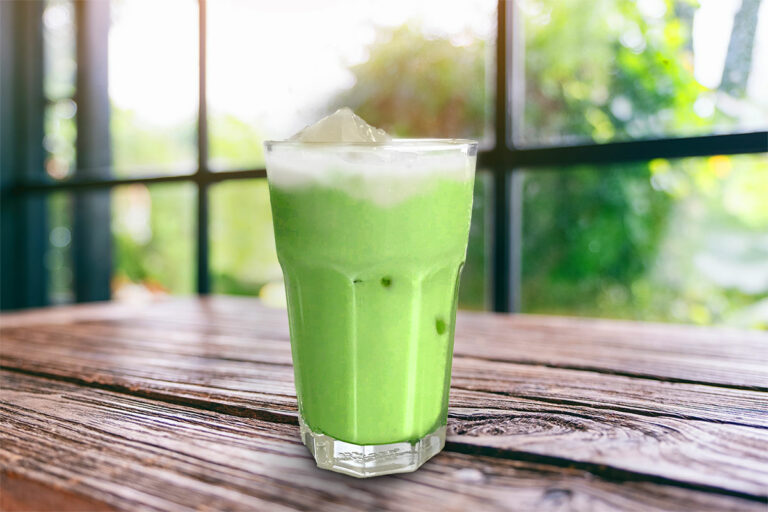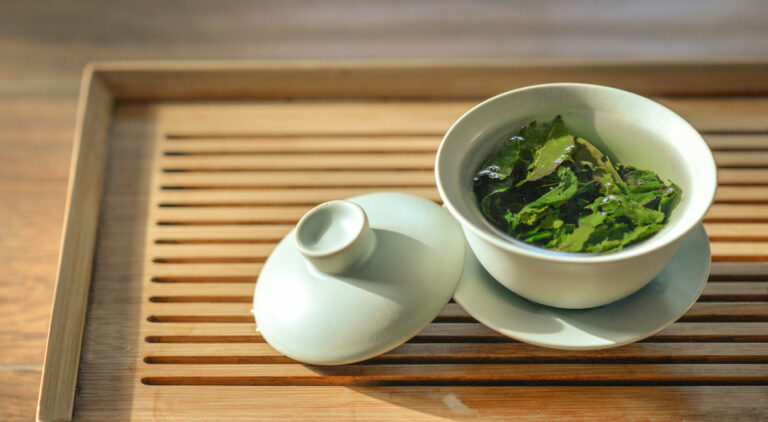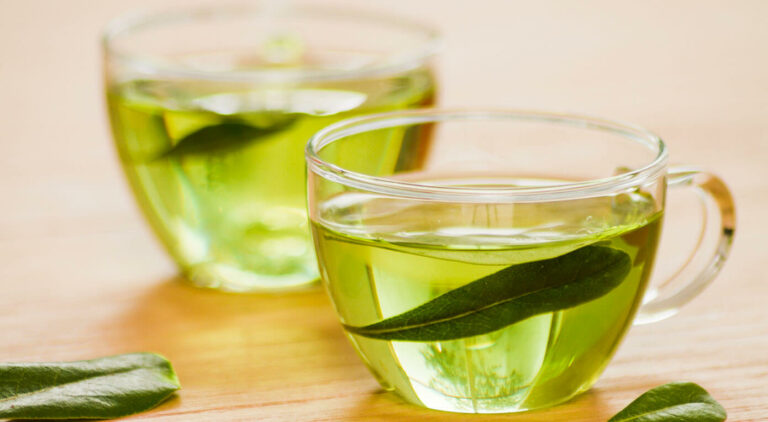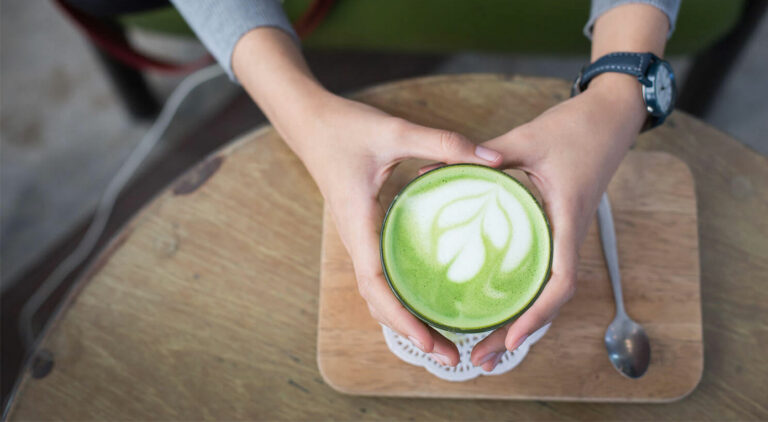Is Green Tea Acidic? 7 Facts About Green Tea You Need To Know
There are three main types of teas: green tea, oolong tea, and black tea. Among these true teas, green tea is one of the most popular teas all around the world. And it sounds pretty healthy. But, is green tea acidic? Most people think that since it is green and comes from leaves, then it must come with lower acidity levels than other teas and be great for the body.
After all, isn’t it packed full of antioxidants that can help fight off free radicals in your body and ward off diseases like cancer and heart disease? Don’t be too sure about that, because there isn’t clear evidence that green tea or different types of teas helps people prevent the risk of cancer. [1]https://www.cancer.gov/about-cancer/causes-prevention/risk/diet/tea-fact-sheet Furthermore, drinking green tea or acidic drinks can lead to side effects, especially in excessive amounts.
Could that be due to the acid levels or the pH scale of green tea? Read on to find out which are the more acidic teas and if green tea is acidic or not.
How Much Acid is There in a Cup of Tea?
The acidity of tea is not determined by its taste. In other words, it doesn’t mean that tea with a sour taste is considered a high acidic tea. There are sweet and sugary teas that are tested as acidic drinks.
It also depends on when you have the tea. If you were to drink tea on an empty stomach regularly, you may eventually experience stomach problems due to the imbalance level of acidity in your stomach.
The acidity level also depends on the type of tea you drink, the preparation process, how long it is steeped, and how much it is diluted. There are teas that are indeed acidic or teas with acidic pH values.
The pH scale measures how acidic or basic (alkaline) a substance is. It ranges from 0 to 14, with 0 being the most acidic, 7 being neutral, and 14 being the most alkaline. A pH between 0 and 6 is considered acidic, a pH between 7 and 8 is considered neutral, and a pH between 8 and 14 is considered alkaline.
A study was done to compare two different types of commercial teas in the Brazilian market:
- Brewed teas – these are teas where you have to manually add hot water to fresh tea leaves or tea bags with fresh loose leaves before you drink them. Some examples are green tea leaves and black tea leaves.
- Ready-to-drink teas – these are teas that have been pre-brewed, with added artificial flavorings like sugar to enhance their tastes. An example is canned and bottled iced tea, fruit teas, and lemon tea.
It was found that ready-to-drink teas show the lowest pH values or are more acidic compared to brewed teas that were tested. For ready-to-drink teas (canned and bottled), the average values of pH varied between 2.89 and 4.03. The smallest pH value (2.89) was found for a commercial brand of canned black tea with a lemon flavor.
As for brewed tea, they have pH values close to neutral or pH 7, with chamomile tea scoring the highest.[2]https://www.scielo.br/j/rgo/a/dg4qwrB8BR5Fg95Zn8dxBfd/?lang=en
Is Green Tea Acidic or Alkaline?
Based on the study that’s mentioned, green tea is not acidic, but the pH level in most drinks containing green tea is low enough to counteract the natural acidity in your stomach. Drinking green tea regularly, especially if it’s not high-quality green tea, will not put your stomach into a condition where it has a higher pH.
The main reason why people think that green tea is acidic is that the leaves of the Camellia sinensis plant are called “tea leaves”, hence “green tea”, but this does not make it an acid. The confusion likely comes from the fact that green tea originates in Asia, where it has been traditionally prepared by steeping the dried leaves in water and then diluting this mixture with more water to drink it. It would be no surprise then if people assumed that green tea was just like other teas which contain flavorings and vary in pH.
However, unlike teas which are flavored, iced teas, or brewed tea soaked in fruit juice or milk, green tea bears minimal organic acids. While it might add a hint of sweetness to the brewed beverage itself, any sort of acidity is mild at most and will certainly be diluted even further when mixed into a larger amount of liquid.
This is probably due to the fact that there are many different brands of green tea, some are acidic due to additives, but not all of them are acidic. In addition, the acidity levels of green tea depend on where you get your tea from, and its cultivated variety of tea cultivars. With the increase in brewing temperature and time, the pH value increases.[3]http://www.tea-science.com/EN/10.13305/j.cnki.jts.2013.05.001
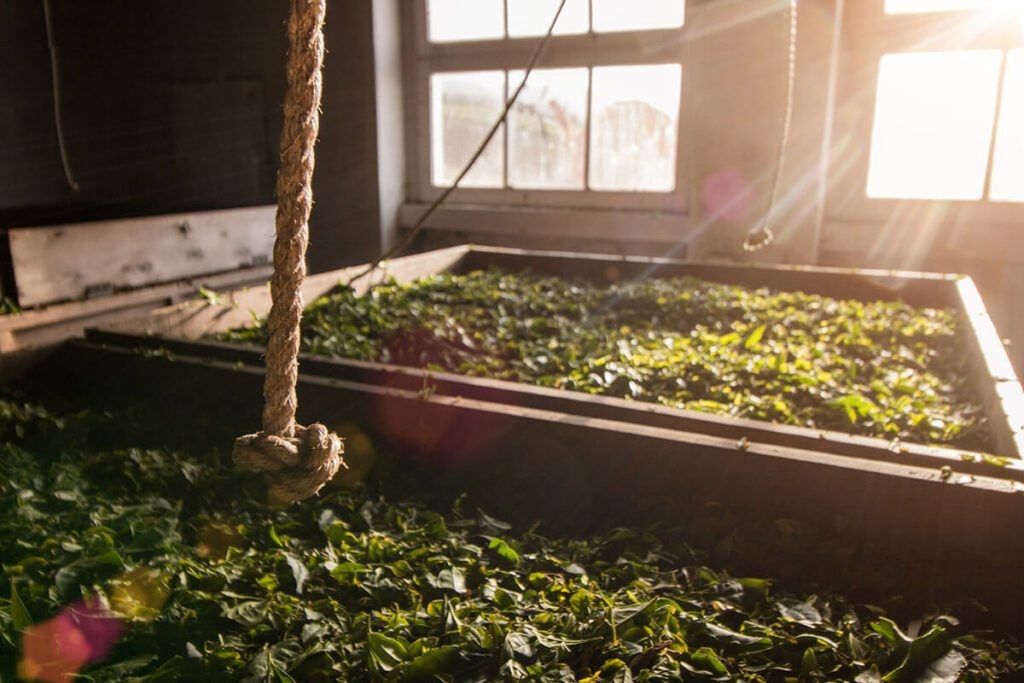
How much acid is in green tea?
This is a very important question to answer since if it’s not acidic, then why are people claiming it’s acidic? Or, why is the pH level of green tea actually low enough to counteract the acidity in your stomach? When people list the acidity of green tea, they’re usually talking about malic acid, which is a byproduct of the plant metabolism process and not the actual acidity in green tea.
Malic acid is found in many fruits, hence it is used as a food processing aid in bottled iced teas, carbonated beverages, and sports drinks.[4]https://www.ams.usda.gov/sites/default/files/media/L-Malic%20Acid%20TR.pdf If you are drinking green tea without additives, there may still be malic acid present in your tea, but the pH level stays around 7.
Green tea contains both acids and alkaline. They are phenolic acids (chlorogenic acid, gallic acid, and caffeic acid) and purine alkaloids (caffeine, theobromine, and theophylline).[5]https://www.jstage.jst.go.jp/article/cpb/62/4/62_c13-00814/_html This means green tea is by nature very close to neutral or not acidic. But the pH level of its acidity varies due to brewing processes. If you’d like to reduce its acidic level, just add more water and that will dilute it and raise its pH level to be less acidic.[6]http://www.oralhealth.ro/volumes/2010/volume-2/V2-10-4.pdf
Which Tea is Least Acidic
Matcha is the least acidic tea, followed by rooibos and black tea. These three types of tea are better options when it comes to trying to lower your stomach’s pH since they are lower in pH than green tea.
pH Value of Black Tea Vs Green Tea
Both green and black teas come from the same plant, Camellia sinensis, but they are processed differently before they are consumed. Green tea leaves are not processed as much as black tea. Green tea undergoes very minimal oxidation, just after white tea. White tea is created with the least oxidation out of all teas.
Black tea is produced by fermenting the leaves, then they are either dry or packed into a tea bag, both of which are then steeped in hot water. Due to the oxidation process, different type of tea leaves is produced. This also explains the different colors of different teas.
This makes black tea more acidic than green tea because it is fully oxidized, meaning that it has been exposed to oxygen for an extended period of time. In contrast, green tea is not oxidized, so it is less acidic.
Since the oxidation process converts polyphenols into tannic acid, which is a weak acid, black tea will be more acidic than green tea.
Black tea has a pH that falls between 4.9 and 5.5, making it slightly more acidic than green tea, which has a pH between 6 and 7.
Green Tea and Acid Reflux?
What is Acid Reflux
Acid reflux, also known as gastroesophageal reflux disease (GERD), is a condition in which stomach acid flows upward into the esophagus, causing symptoms such as throat pain, a burning sensation, belching, and even regurgitation of food.

This question also brings up important facts about green tea’s pH and drinking green tea regularly. After all, if it does cause acid reflux, then it would mean that your stomach would have an increased pH after drinking regular cups of green tea. The problem is that, according to many gastroenterologists, what’s usually happening after you drink a cup of green tea is that your stomach has a lower pH for a short period of time.
So, what would happen if you drank a cup of green tea regularly? Your stomach would have a lower pH for longer periods of time because the tea is low enough in pH to counteract the natural acidity in your stomach. You are not drinking tea every time you drink a cup of green tea. Your stomach also has a low pH most of the time and that is probably why you don’t experience any issues after drinking tea.
Can Green Tea Stop Acid Reflux
Although green tea is often praised for its health benefits, it’s not the best choice for people who experience acid reflux. In fact, there’s scientific evidence that some green teas can increase your risk of acid reflux.
Acid reflux occurs when the sphincter between your esophagus and stomach relaxes too much, letting acid creep into your esophagus. It’s usually a result of a lifestyle or diet that makes you more susceptible to digestive issues.
The problem with green tea is that it contains caffeine, which functions as a natural laxative and increases the acidity in your stomach. This can cause stomach acid to travel back up into your esophagus, which is what causes symptoms like heartburn.
If you already suffer from regular heartburn or gastroesophageal reflux disease (GERD), drinking green tea may exacerbate the problem. It is best to stick to drinking water, ginger tea, chamomile tea, peppermint tea, and herbal teas like yerba mate.
Conclusion
Green tea is often known as a healthy drink in Asian countries. Actually, it contains acid, but not much! The caffeine level of green tea is great but lower than coffee. Due to the chemical reaction in the body when drinking green tea, there will be the formation of acids.
In conclusion, green tea is not acidic by any means. On the pH scale, green tea is considered to have a neutral pH, right around 7 which is almost as close to neutral as you can get.
References


